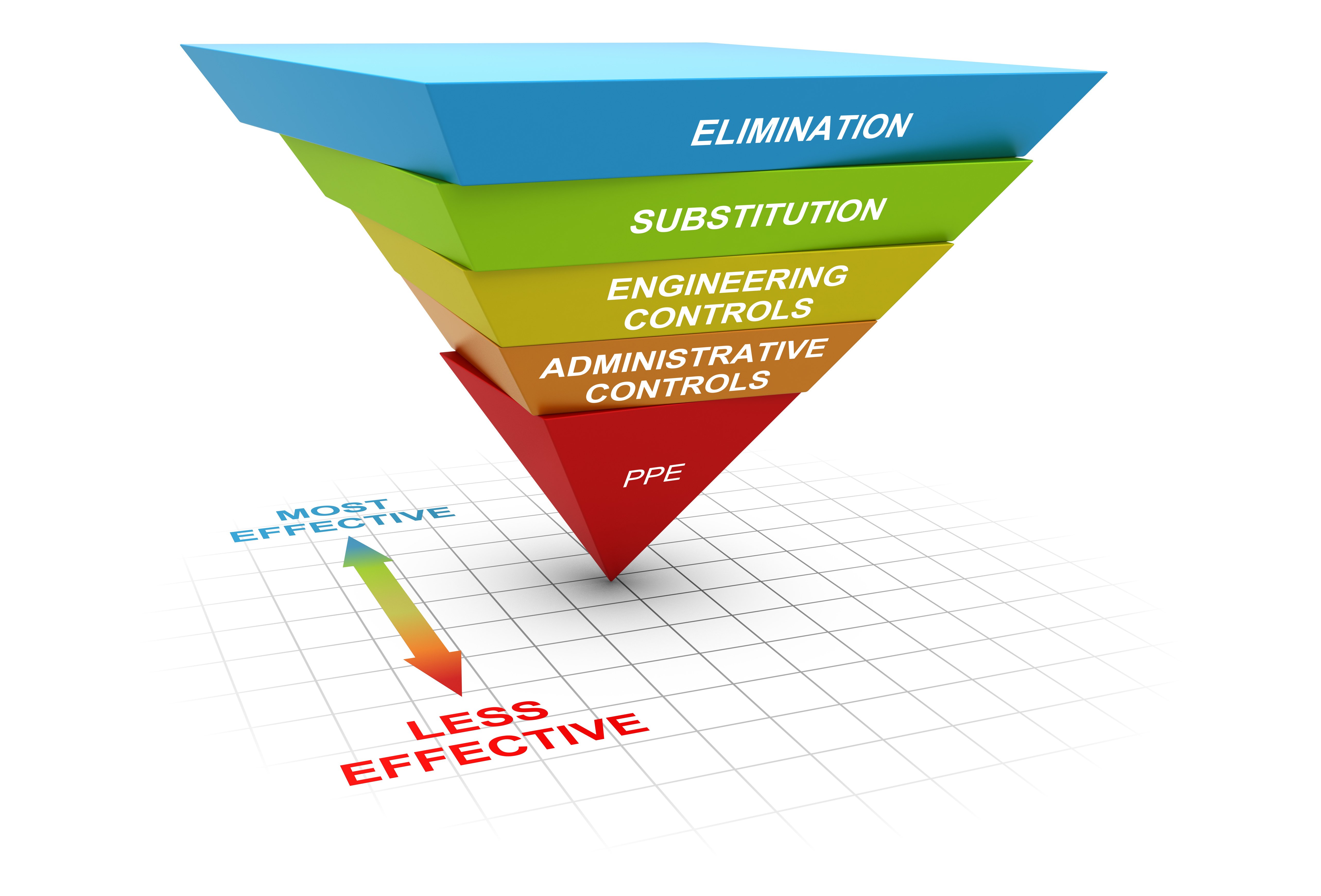Understanding how you can control hazards in the workplace

Graphic via CDC.GOV.
Safety is about protecting employees and others from physical hazards that can cause harm. A key question for a motor carrier’s leadership team: How effective are your efforts to control hazards? The above graphic created by the National Institute of Occupational Health (NIOSH), depicting its hierarchy of hazard controls from least to most effective. Understanding this hierarchy can help you evaluate your current hazard control efforts and give insight into how you can control hazards more effectively.
PERSONAL PROTECTIVE EQUIPMENT
Personal protective equipment (PPE), including gloves, proper footwear, protective eyewear, and reflective vests, is often the most visible aspect of hazard control efforts, but PPE can also be the least effective. Why? Because PPE may not eliminate or reduce the hazard, it offers protection only after exposure. Consider a driver who wears a safety vest while loading and unloading. The vest alone cannot prevent an accident, but it can help increase the driver’s visibility and possibly reduce the risk of injury.
ADMINISTRATIVE CONTROLS
Administrative controls involve changing behavior through work practices. Conducting safety training, implementing standard operating procedures, enforcing mandatory pre-trip inspections, and limiting driving hours to reduce fatigue are administrative strategies designed to control hazards. These measures can be cost-effective and easy to implement, but they can often fall short due to human error or non-compliance. A well-trained driver may still forget a step or ignore a policy under stress or time pressure. Therefore, while valuable, the effectiveness of administrative controls can depend on consistent monitoring and reinforcement.
ENGINEERING CONTROLS
Engineering controls can be an effective hazard control tool because they involve modifying the equipment or environment to reduce the risk of injury at the source. Engineering controls can include automatic braking systems, lane-departure warnings, fender-mounted mirrors, and dash cameras. For example, equipping a fleet with inward-facing cameras can help detect when a driver is fatigued or distracted and alert both the driver and dispatcher. Engineering controls are intended to be proactive and might have a long-term return on investment in reduced injury rates and liability exposure.
SUBSTITUTION
Substitution involves replacing hazardous practices, substances, or tools with safer alternatives. In motor carrier operations, this could mean transitioning from diesel-powered forklifts to electric ones to reduce exhaust exposure in indoor loading docks. Another example includes replacing traditional hazardous cleaning agents with less toxic solutions. The goal is to reduce the level of hazard while maintaining operational effectiveness. Successful substitution often results in fewer health risks, better environmental outcomes, and improved worker morale. While substitution sometimes requires up-front investment or operational changes, the long-term benefits could be significant.
ELIMINATION
Elimination, meaning completely removing a hazard from the workplace, can be an effective strategy to control hazards, though it is often the most challenging to implement. For example, if drivers are exposed to a fall hazard while securing loads, redesigning trailers with automated tarping systems can help eliminate the need for workers to climb onto cargo. Another idea is to re-reroute drivers away from known hazards, like turning right out of the terminal instead of left across heavy traffic lanes. Elimination often requires redesigning work processes, but it can provide the most significant long-term safety benefit by removing the risk entirely.
FINAL THOUGHTS
From a risk management perspective, motor carriers should determine if their current hazard control measures are effective and evaluate whether they rely too heavily on one method over another. Periodic hazard assessments, near-miss reporting, and data analytics can help identify gaps in current hazard control strategies. Additionally, solicit employees to review work procedures and identify hazards. They can help identify opportunities for improvement that might otherwise go unnoticed.
Furthermore, financial considerations should not overshadow safety investments. Engineering controls and substitution may require higher up-front costs, but they can help reduce workers compensation claims and improve performance and compliance scores during audits. By understanding and implementing the whole hierarchy of hazard controls—from PPE to elimination—leaders can make informed decisions that can help reduce risk. Effectiveness lies not only in good intentions but also in proactive, evidence-based action.
Note: These lists are not intended to be all-inclusive.
The information in this article is provided as a courtesy of Great West Casualty Company. To see what additional resources Great West Casualty Company can provide for its insureds, please contact your risk control representative, or click below to request a quote.




